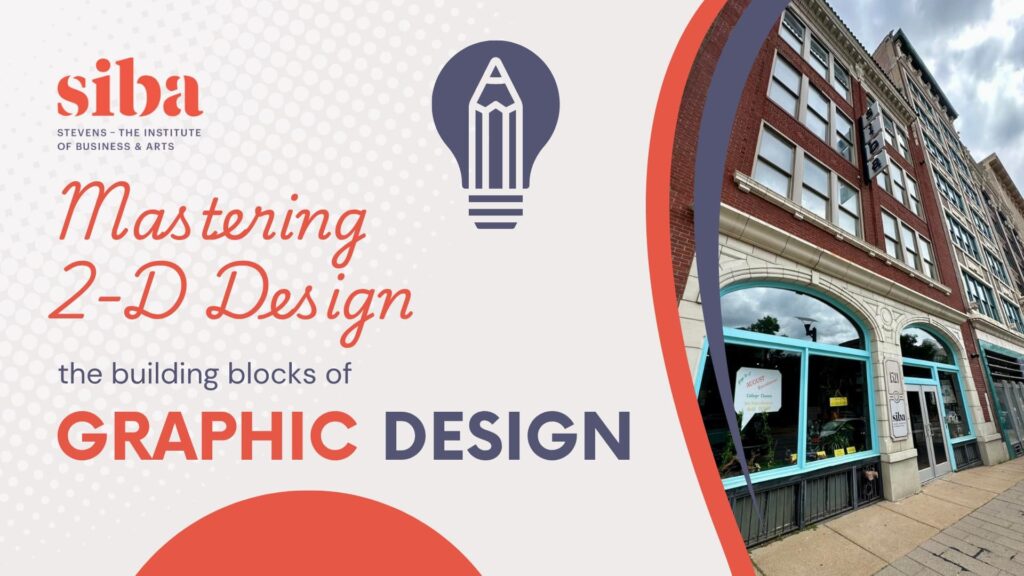As a graphic design student, you may be tempted to dive straight into the latest design software and start creating visually stunning designs. However, neglecting the fundamentals of design can lead to a lack of depth and coherence in your work. Design Fundamentals (2-D) is the foundation upon which all good design is built, and mastering these principles is essential for any aspiring graphic designer.
1. Understanding the Elements of Design
Design Fundamentals (2-D) teaches you the basic elements of design, including line, shape, form, value, texture, and color. These elements are the building blocks of design, and understanding how to use them effectively is critical to creating visually appealing and effective designs. By mastering these elements, you’ll be able to create designs that communicate your message clearly and engage your audience.
2. Developing Visual Hierarchy
A well-designed visual hierarchy is essential for guiding the viewer’s attention through your design. Design Fundamentals (2-D) teaches you how to create a visual hierarchy using size, color, and placement to draw attention to key elements and create a clear flow of information. This skill is critical in graphic design, where you need to communicate complex information quickly and efficiently.
3. Creating Balance and Harmony
Balance and harmony are essential principles of design that create a sense of stability and visual appeal. Design Fundamentals (2-D) teaches you how to use symmetry, asymmetry, and visual weight to create balance and harmony in your designs. By mastering these principles, you’ll be able to create designs that are aesthetically pleasing and engaging.
4. Effective Use of Color
Color is a powerful tool in graphic design, and understanding how to use it effectively is critical to creating successful designs. Design Fundamentals (2-D) teaches you the principles of color theory, including the color wheel, color harmony, and contrast. By mastering color theory, you’ll be able to create designs that evoke emotions, convey meaning, and engage your audience.
5. Understanding Typography
Typography is a critical aspect of graphic design, and understanding how to use type effectively is essential to creating successful designs. Design Fundamentals (2-D) teaches you the principles of typography, including font selection, font size, line spacing, and alignment. By mastering typography, you’ll be able to create designs that communicate your message clearly and effectively.
6. Developing Problem-Solving Skills
Design Fundamentals (2-D) teaches you how to approach design problems in a systematic and analytical way. By learning how to break down complex design problems into smaller components, you’ll develop problem-solving skills that will serve you well throughout your design career.
7. Building a Strong Foundation for Digital Design
While Design Fundamentals (2-D) focuses on traditional design principles, the skills you learn are highly transferable to digital design. By mastering the fundamentals of design, you’ll be able to create effective designs in any medium, from print to digital.
8. Enhancing Creativity
Design Fundamentals (2-D) may seem like a restrictive set of rules, but in reality, it provides a framework for creativity. By understanding the principles of design, you’ll be able to experiment and innovate within a set of guidelines, leading to more effective and creative designs.
9. Improving Communication Skills
Graphic design is all about communication, and Design Fundamentals (2-D) teaches you how to communicate effectively through visual means. By mastering the principles of design, you’ll be able to convey complex information in a clear and concise manner, making you a more effective communicator.
10. Staying Competitive in the Industry
In today’s competitive design industry, having a solid understanding of Design Fundamentals (2-D) is essential to staying ahead of the curve. By mastering the principles of design, you’ll be able to create high-quality designs that meet the needs of your clients and set you apart from your competitors.
11. Building Confidence
Studying Design Fundamentals (2-D) can be a challenging but rewarding experience. By mastering the principles of design, you’ll build confidence in your abilities and develop a sense of pride in your work.
12. Preparing for a Career in Graphic Design
Studying Design Fundamentals (2-D) is essential preparation for a career in graphic design. By mastering the principles of design, you’ll be well-equipped to tackle the challenges of a fast-paced design industry and create successful designs that meet the needs of your clients.
In conclusion, studying Design Fundamentals (2-D) is essential for any aspiring graphic designer. By mastering the principles of design, you’ll be able to create effective, visually appealing, and engaging designs that communicate your message clearly and effectively. Don’t neglect the fundamentals of design – invest in your education and reap the rewards of a successful design career. By acquiring these skills, you’ll not only increase your earning potential but also open yourself up to a world of creative possibilities. Take a look at our Graphic Design curriculum and get started on your path as a Graphic Designer today!
Siba creates a special opportunity for students to learn and grow creatively as well as learning valuable business tools that correspond to their specific industry. Learn more about all of our programs in Fashion Development and Merchandising, Business Administration, Graphic Design and Interior Design. Our team of experienced staff are ready and willing to help you refine your skills and build you up to reach your potential in your selected area of study. Reach out to our team today for more information! Your career and professional life begin at Siba!

